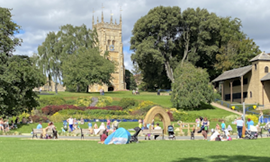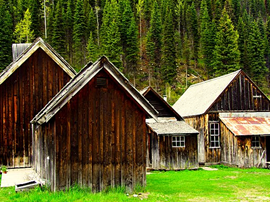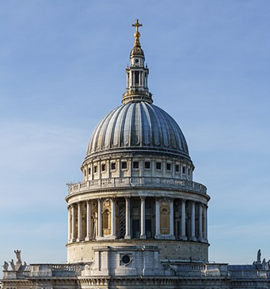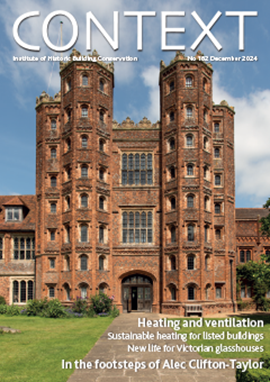The Oxford Dictionary of Architecture: third edition
The Oxford Dictionary of Architecture: third edition, James Stevens Curl and Susan Wilson, Oxford University Press, 2015, ISBN 978 0 199674 98 5. 1,040 pages, 260 line drawings, hardback.
The success of this dictionary may be judged from its reaching a third edition in the 16 years since it first appeared. The 6,000 entries at which it now stands include new contributions on landscape architecture by Susan Wilson that make the third edition different from the two previous ones. Professor Stevens Curl, the main author, explains the circumstances of the book’s production in his two prefaces that introduce the new edition.
All planning offices except the most scrupulously ‘paper-free’ contain a bookshelf. Most of these have random accumulations of books and pamphlets. In places where conservation is practised, they are likely also to have a copy of Charles Mynor’s Listed Buildings, Conservation Areas and Monuments. The new dictionary is recommended as a useful addition to these workplace stalwarts. It is also worth considering for home use or for library-building in public places. It is slightly too bulky for the pocket but will fit gracefully on to all shelves.
It contains definitions of most built form and drawings by Stevens Curl himself of the parts that need more explaining. He is an accomplished artist and draughtsman. Main materials (such as granite, limestone and mortar) are here together with much useful terminology on carpentry and bricks. Architects (British, Irish, European and American in the main but not exclusively) are here with their dates, full names and some comments, with a geographical spread reaching back far into the past. Individuals still at work (such as Piano, Rogers and Foster, bracketed under the entry for ‘High Tech’) feature with many 20th century architects and their main works. Individual sites or locations are not here unless their names imply a building type (such as Kremlin or pyramid) or architectural feature (such as Venetian blind).
Concepts, movements and styles are here in plenty. These draw Stevens Curl out of his academic reserve. He comments acutely on the debates around ‘International Modern’ during the long 20th century, at this point introducing critics and scholars (such as Colvin, Betjeman, Pevsner and Summerson). Stevens Curl has written definitively on Victorian churches and cemeteries, Georgian Ireland, and London spas and pleasure grounds. His inclinations and his sympathies obviously lie here, yet he deals efficiently with the contemporary world. The new dictionary supplements existing textbooks or the internet for conservationists or other users but does not pretend to be a substitute for them.
Over 100 pages of bibliography offer a goldmine of learning and compilation (three different William Robinsons, for example), and valuable material on landscape (such as the entry on ‘Picturesque’). The sites covered represent more than any lifetime could encompass, so it is not surprising that small errors can creep in. Of the three entries for ‘Richardson’, the one for Henry Hobson Richardson (1838-86) concludes with the ‘demolition’ of ‘Lululand’ near Watford. This former country house is Grade II* listed, and the fragment of it that survives has been incorporated into a new and carefully designed block of flats.
Written with considerable wit as well as great scholarship, this is an indispensable book of reference.
This article originally appeared as ‘A is for architecture’ in Context 140, published by the Institute of Historic Building Conservation (IHBC) in July 2015.It was written by Graham Tite, conservation officer working under contract.
--Institute of Historic Building Conservation
Related articles on Designing Buildings
IHBC NewsBlog
200th Anniversary Celebration of the Modern Railway Planned
The Stockton & Darlington Railway opened on September 27, 1825.
Competence Framework Launched for Sustainability in the Built Environment
The Construction Industry Council (CIC) and the Edge have jointly published the framework.
Historic England Launches Wellbeing Strategy for Heritage
Whether through visiting, volunteering, learning or creative practice, engaging with heritage can strengthen confidence, resilience, hope and social connections.
National Trust for Canada’s Review of 2024
Great Saves & Worst Losses Highlighted
IHBC's SelfStarter Website Undergoes Refresh
New updates and resources for emerging conservation professionals.
‘Behind the Scenes’ podcast on St. Pauls Cathedral Published
Experience the inside track on one of the world’s best known places of worship and visitor attractions.
National Audit Office (NAO) says Government building maintenance backlog is at least £49 billion
The public spending watchdog will need to consider the best way to manage its assets to bring property condition to a satisfactory level.
IHBC Publishes C182 focused on Heating and Ventilation
The latest issue of Context explores sustainable heating for listed buildings and more.
Notre-Dame Cathedral of Paris reopening: 7-8 December
The reopening is in time for Christmas 2025.
Stirling Prize-winning Salford building to be demolished
The Centenary Building will be bulldozed as part of the wider £2.5bn Crescent regeneration project.
















